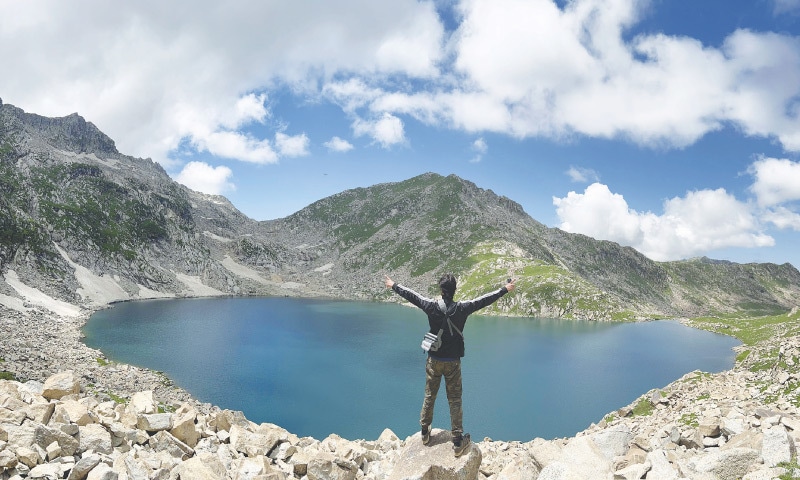The world of travel is evolving faster than ever, and 2025 promises to be a pivotal year for the global tourism landscape. From eco-conscious adventures to AI-driven itineraries, travelers are redefining what it means to explore the world. As someone who’s spent years wandering through bustling markets in Marrakech and quiet fjords in Norway, I’ve seen firsthand how tourism shapes cultures, economies, and environments. In this article, we’ll dive into the trends driving the future of travel, blending data with stories to uncover what’s next for globetrotters and industry insiders alike. Buckle up—it’s going to be an exciting journey!
Why Tourism Matters in 2025
The global tourism industry is a powerhouse, contributing over $11 trillion to the global GDP in 2024 and projected to hit $16 trillion by 2034. With 1.5 billion international arrivals expected in 2025, the sector is not just recovering from the pandemic—it’s thriving. But growth comes with challenges, from overtourism to environmental concerns. Let’s explore the trends shaping this dynamic landscape.
The Resurgence of International Travel
International tourism is back with a bang, reaching 98% of pre-pandemic levels in 2024. By 2025, arrivals are forecasted to hit a record 1.75 billion, driven by short-haul destinations and a rebound in long-haul travel. My own trip to Japan last year showed me how eager travelers are to cross borders again, with Tokyo’s streets buzzing with international faces.
Short-Haul vs. Long-Haul: What’s Winning?
Short-haul destinations like Europe’s coastal cities are leading the charge, but long-haul markets, especially in Asia, are catching up. Travelers are balancing cost, convenience, and curiosity, with places like Guyana and Oslo emerging as fresh favorites.
Sustainability: The Heart of Modern Travel
Sustainability isn’t just a buzzword—it’s a mandate. With 81% of travelers prioritizing eco-friendly options, the industry is pivoting toward carbon-neutral flights and green-certified hotels. I remember staying at a solar-powered lodge in Costa Rica, where every meal was locally sourced. It felt good knowing my trip supported the community and the planet.
Carbon-Neutral Flights and Eco-Friendly Stays
Airlines are investing in sustainable aviation fuel (SAF), projected to power 10% of global flights by 2025. Hotels are also stepping up, with a 35% annual increase in demand for eco-certified properties offering water recycling and locally sourced products.
Slow Travel: Quality Over Quantity
Slow travel is gaining traction, encouraging longer stays in fewer destinations to reduce carbon footprints. Think train journeys through the Alps or sailing the Greek islands. This trend resonates with me—I once spent two weeks in a Tuscan village, soaking in every moment, far from the rush of checklists.
Technology: Redefining the Travel Experience
Technology is the backbone of 2025’s tourism boom, adding $305 billion to the global travel economy. From AI-powered planning to biometric check-ins, innovation is making travel smoother and more personalized.
AI and Personalization
Artificial intelligence is transforming how we plan trips. Platforms like Kayak use AI to craft tailored itineraries based on your preferences. Last summer, I let an AI tool plan a weekend in Lisbon, and it nailed every recommendation, from hole-in-the-wall tapas bars to sunset viewpoints.
Biometric Check-Ins and VR Tours
By 2025, 75% of airports will use biometric systems, cutting wait times by 50%. Virtual reality tours are also trending, letting travelers preview destinations before booking. Imagine virtually strolling through a Balinese resort before committing—pretty cool, right?
The Rise of New Traveler Demographics
Travelers are changing, and so are their priorities. From solo female adventurers to digital nomads, 2025’s tourists are diverse and demanding unique experiences.
Solo Female Travelers: Empowering Adventures
Solo female travelers, especially women over 50, make up 80% of independent travelers globally. Companies like Intrepid Travel report an 86% surge in women’s expedition programs. My friend Sarah, a 55-year-old solo traveler, raved about her women-only trek in Peru—it was empowering and safe.
Digital Nomads: Work and Wander
With 35% of the global workforce working remotely, “workcations” are booming. Over 50 countries now offer digital nomad visas, blending work and leisure. Resorts are adding co-working spaces with high-speed internet, catering to this growing tribe.
Cultural Immersion and Wellness Travel
Travelers in 2025 crave meaning, whether through cultural deep dives or wellness retreats. These trends reflect a desire for connection and self-care.
Cultural Immersion: Beyond Sightseeing
Millennials and Gen Z are leading the charge, with 92% prioritizing local cuisine and 88% seeking interactions with residents. On a trip to Morocco, I joined a Berber cooking class in the Atlas Mountains—it was more than a meal; it was a window into a culture.
Wellness Tourism: Mind, Body, and Soul
Wellness travel is skyrocketing, with yoga retreats, digital detox programs, and spa getaways in demand. Travelers are designing trips around holistic health, from Bali’s mindfulness retreats to Iceland’s geothermal spas.
Challenges Facing the Industry
Growth brings hurdles. Overtourism, environmental impact, and labor shortages are pressing issues that need addressing in 2025.
Overtourism: Finding Balance
Popular destinations like Venice and Barcelona are grappling with overtourism. Travelers are shifting to lesser-known spots, with 70% of young adults seeking unique destinations. Policies like tourist taxes and visitor caps are helping, but the challenge persists.
Environmental Footprint
Tourism generates 1.6 kg of waste per person daily, double the global average. By 2034, tourist waste could hit 205 million tonnes annually without intervention. It’s a stark reminder to travel responsibly—small choices, like skipping single-use plastics, add up.
Labor Shortages
The industry faces persistent labor shortages. Workforce development and support for small businesses are critical to sustaining growth.
Comparing Key Trends: 2024 vs. 2025
| Trend | 2024 Status | 2025 Outlook |
|---|---|---|
| International Arrivals | 98% of pre-pandemic levels | Record 1.75 billion arrivals |
| Sustainability | Growing focus on eco-friendly practices | 81% of travelers prioritize green options |
| Technology | AI and biometrics emerging | $305 billion added to travel economy |
| Traveler Demographics | Rise in solo and group travel | Solo female travelers and digital nomads soar |
Pros and Cons of 2025’s Tourism Trends
Pros:
- Sustainable practices reduce environmental impact.
- Technology enhances personalization and efficiency.
- Diverse demographics drive inclusive travel experiences.
- Lesser-known destinations gain economic benefits.
Cons:
- Overtourism strains popular destinations.
- High prices may deter budget travelers.
- Labor shortages challenge service quality.
- Slow adoption of sustainable practices in some regions.
People Also Ask (PAA) Section
What are the top travel trends for 2025?
Sustainability, AI-driven personalization, slow travel, cultural immersion, and wellness tourism are leading the way. Travelers are prioritizing eco-friendly options, meaningful connections, and tech-enhanced experiences.
How is technology changing travel in 2025?
AI is personalizing itineraries, biometric systems are streamlining airport processes, and VR tours are helping travelers preview destinations. These innovations make travel more efficient and tailored.
Where are the best emerging destinations for 2025?
Lesser-known spots like Guyana, Oslo, and Albania are gaining popularity as travelers seek alternatives to crowded hubs like Paris or Rome.
How can I travel sustainably in 2025?
Choose eco-certified accommodations, opt for public transport or slow travel, and support local businesses. Tools like Green Travel Index can guide your choices.
What tools are best for planning a 2025 trip?
Platforms like Kayak, Skyscanner, and Tripadvisor offer AI-driven recommendations and real-time deals. Apps like Rome2Rio help plan multi-modal journeys.
FAQ Section
Q: How will AI impact travel planning in 2025?
A: AI will streamline booking, offer personalized itineraries, and enhance customer service. Tools like ChatGPT are already used by 51% of young travelers for trip planning.
Q: Are solo female travelers safe in 2025?
A: Yes, with companies offering tailored programs and destinations improving safety measures. Always research and choose reputable operators like Intrepid Travel.
Q: What’s the best way to avoid overtourism?
A: Visit lesser-known destinations, travel during off-peak seasons, and use platforms like Visit.org to find authentic, low-impact experiences.
Q: How can digital nomads find work-friendly destinations?
A: Look for countries with digital nomad visas, like Portugal or Costa Rica, and check for co-working spaces on sites like Workfrom.
Q: Why is slow travel becoming popular?
A: Slow travel reduces environmental impact and allows deeper cultural connections. It’s about savoring the journey, not rushing through checklists.
Wrapping Up: The Road Ahead for Global Tourism
As we head into 2025, the global tourism landscape is a vibrant mix of opportunity and responsibility. Whether you’re a solo traveler chasing cultural connections, a digital nomad blending work and wanderlust, or a family seeking a sustainable getaway, the trends shaping travel are clear: prioritize meaning, embrace technology, and tread lightly on the planet. My own journeys have taught me that travel isn’t just about seeing new places—it’s about leaving them better than you found them. So, pack your bags, plan with purpose, and let’s make 2025 a year of unforgettable adventures.









Leave a Reply